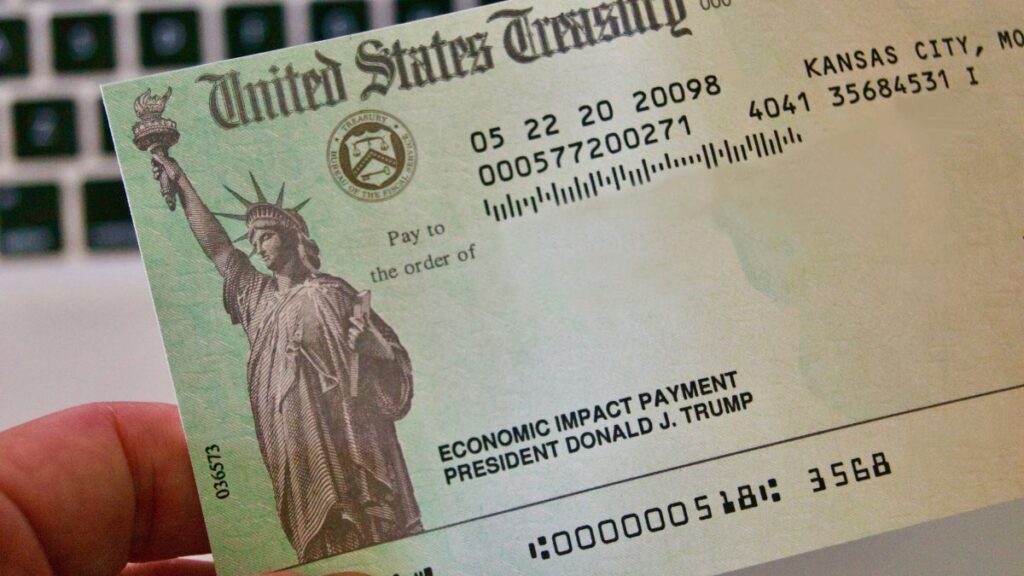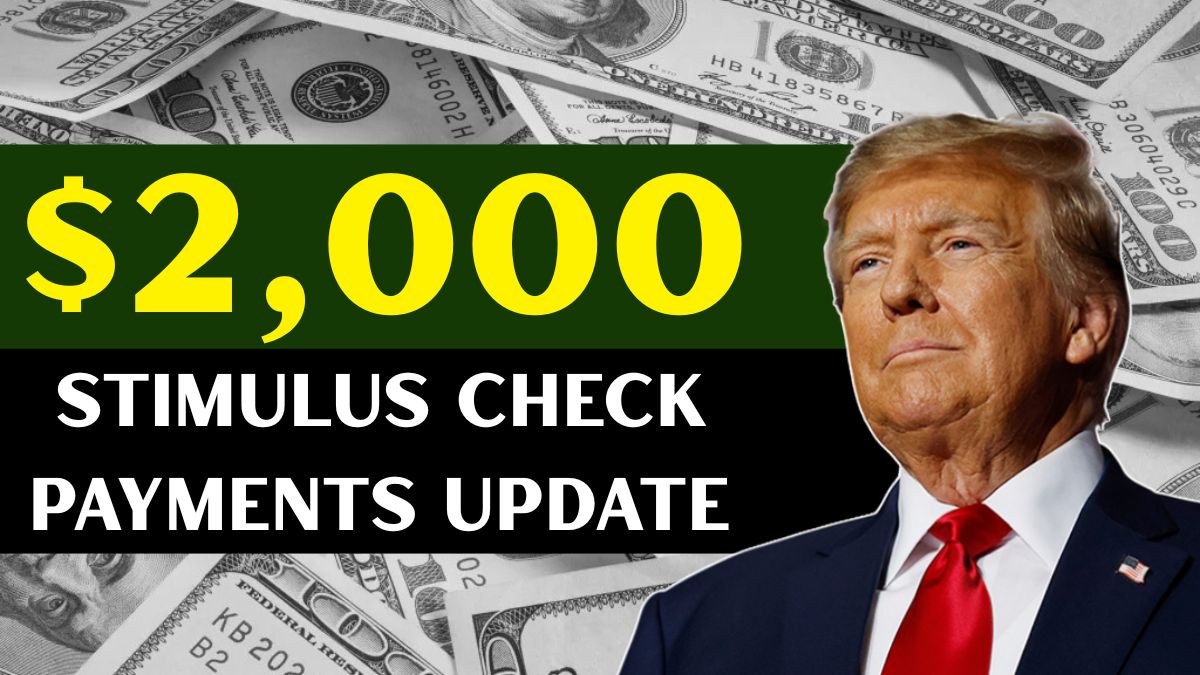$2,000 Stimulus Check Update: Over the past few years, inflation, home rents, and the cost of daily necessities have been steadily rising in the United States. In such a climate, people are increasingly hopeful for any economic relief. Meanwhile, on social media and during his election campaign, Donald Trump put forward an attractive proposal. He claims that customs duty revenue on foreign goods should be distributed directly to American citizens, providing each eligible individual with $2,000.
This idea sounds simple and attractive. But is it truly financially feasible? Will the law, budget, and economy support such a plan? This article attempts to explore this.
What is Trump’s actual proposal?
According to Trump:
- The tariffs the United States imposes on foreign products represent a portion of government revenue.
- This revenue is typically used for budgetary, infrastructure, defense, and other government programs.
- The proposal is to distribute it directly to citizens instead of using it for budgetary or administrative expenses.
- The goal is to provide every eligible American with a $2,000 payment, similar to the stimulus checks provided during the COVID-19 pandemic.
The difference, however, is that this time the money will come not from taxpayers’ budgets but solely from tariff revenues. This idea is certainly grand, but it requires extensive legal, financial, and economic scrutiny.
Can tariff revenues fund this plan?

The plan’s biggest challenge is its funding. Providing $2,000 to every American is no small feat. The number of eligible citizens in the United States is in the millions. According to estimates:
- A payment on this scale would require approximately two and a half times the current total tariff revenue.
- Even combining both old and new tariffs, such a large amount would not be immediately available.
- Furthermore, a portion of that revenue is already earmarked for various government programs.
Economists clearly state that this plan, based on current tariff revenues, is unsustainable. To do this, the government will either have to:
- Increase the budget deficit,
- Cut other programs,
- Or impose new taxes,
All three of which are politically risky steps.
Economic Impact: Both Relief and Risk
Immediate Economic Relief
If this plan is implemented:
- Millions of families will receive immediate relief.
- People trapped under the pressure of inflation will have additional money to spend.
- The poor and middle class will be able to easily meet their daily needs, rent, bills, children’s education, and health expenses.
This means that the positive impact will be visible in the short term.
Long-Term Challenges
But the risks are also not less:
- Higher tariffs mean imported goods will become more expensive.
- Companies will pass on the increased costs to consumers.
- This means that the $2,000 that people receive will be spent in a short time due to increased prices.
- Economists believe that repeated direct cash disbursements may lead people to be reluctant to work or seek employment.
- Persistently deficit-driven schemes can undermine a country’s financial stability.
- If budgetary protections are not provided, such schemes could increase inflation and pressure the credit market.
Political turmoil and expert opinion
Such proposals are often discussed during elections.
- Supporters say the scheme will increase public popularity and provide economic relief.
- Opponents and economists say it is an “impractical propaganda policy” with no budgetary basis or guarantee of long-term benefits.
According to government officials, advancing this proposal will require:
- US Congressional approval,
- Legal review of the entire budget and subsidy structure,
- Detailed analysis of the distribution process, administrative costs, and funding sources.
The scheme has not yet become law and has received no financial support.
Eligibility and Payment Process: What if Enacted?
If this proposal is passed in the future, eligibility will likely be similar to the COVID stimulus:
- Citizens falling within the maximum income limits,
- U.S. citizens or legal permanent residents,
- Tax filers,
- Certain benefit recipients.
Payments could arrive as follows:
- Direct deposit,
- Paper check,
- Or a prepaid card.
Payments would first go to those whose records are already held by the IRS. Any updates would only be released on the official government website or newsletter.
Direct Impact on Businesses and the Public
The U.S. economy is based on imports and exports. Consequently:
- Increased tariffs could provide some support to domestic manufacturing.
- But both companies and consumers would face higher prices.
- Relationships with trade-deficit countries like China and Mexico could also become strained.
- Increased consumer spending power could make it difficult to maintain a balance between domestic and foreign products.
Conclusion: Popularity vs. Reality
An idea like a “tariff dividend” sounds attractive and quickly gains popularity in an election environment.
But reality suggests otherwise:
- Existing tariff revenues are insufficient to fund such a large relief plan.
- Implementing it faces numerous legal and administrative hurdles that could take years to overcome.
- Without a strong budgetary foundation, this plan could create economic imbalances.
While this proposal may make political headlines, unless it receives Congressional approval and solid financial support, it will remain merely an idea—not a real relief plan.
Citizens and voters are advised not to make decisions based solely on discussions.
They should:
- Understand the economic logic.
- Pay attention to budgetary calculations.
- And discern which plans are truly feasible and which are merely campaign tactics.
In the long run, only prudent decisions can safeguard the financial well-being of both the country and its citizens.
FAQs
Q. Is the $2,000 stimulus check officially approved?
A. No. The proposal has not been approved by Congress and is not part of any active government program.
Q. What is the source of money proposed for this payment?
A. The plan suggests using tariff revenue collected from imported goods, instead of using regular budget funds.
Q. Who would be eligible if the plan is ever approved?
A. Eligibility would likely follow COVID-era stimulus rules, including income limits, U.S. citizens, lawful residents, and tax filers.
Q. When will the payments be distributed?
A. There is no payment schedule. The plan is still only a proposal and has no legal or financial clearance.
Q. Could this plan impact inflation or the economy?
A. Yes. Experts warn that higher tariffs and large cash payments could raise costs, increase inflation, and affect economic stability.
